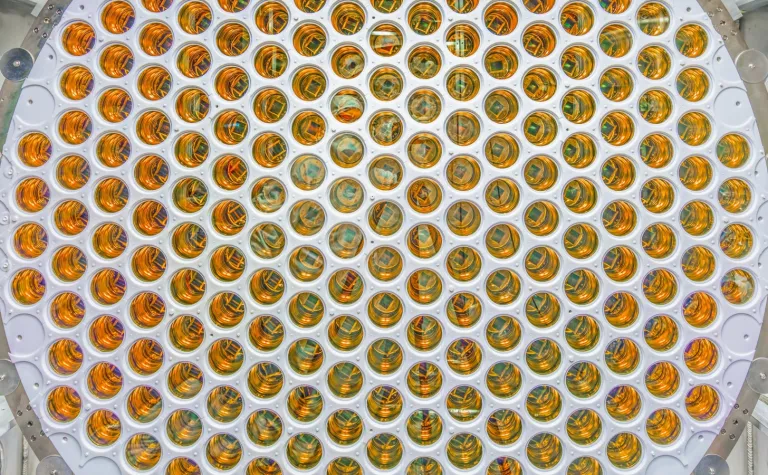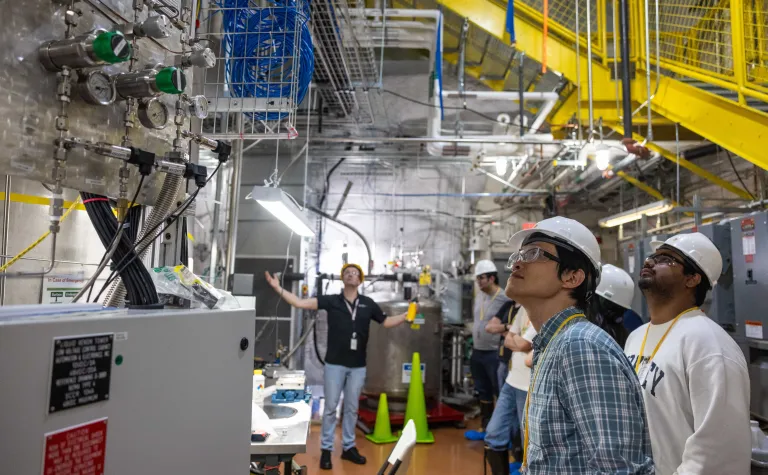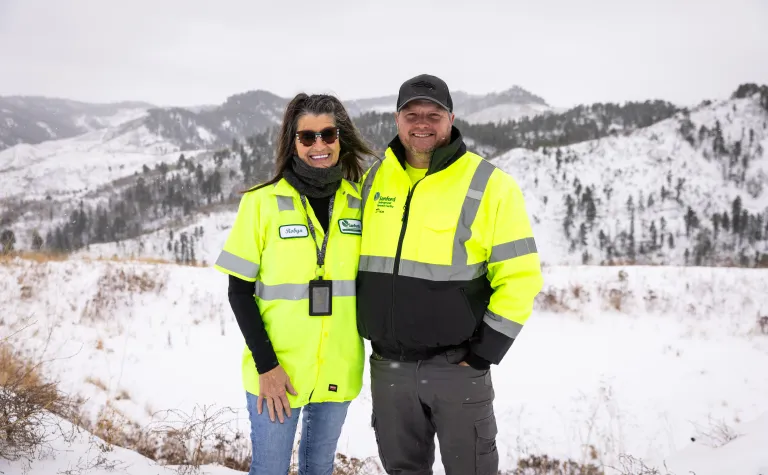Geology
We know this rock well. Homestake's 126 years of geological study laid the groundwork for Sanford Lab engineers to design safe caverns to house big physics experiments.
Understanding the fabric of rock
Nature abhors a vacuum. And when one is created deep underground, it is only natural for the rock to relax and begin to creep into that space. Before excavating caverns, geotechnical engineers must understand the fabric, or character, of the rock. Essentially, they want to understand the strengths and weaknesses so they can determine how rock will behave when excavated. Before engineers begin the excavation process, they also need to know the stress forces in the rock. Sigma 1, Sigma 2 and Sigma 3 define the orientation of these forces, which varies throughout the Earth’s crust—and sometimes within a single excavation. The ideal ratio is 1:1, which rarely ever happens. But at Sanford Lab, it’s really close: .87:1. That means the rock conditions are nearly ideal for large excavations.
What do core samples tell us about the earth?
Core samples give critical information about the strength and geologic composition of the rock, revealing the orientation of folds and other imperfections in the rock mass. The knowledge geotechnical engineers glean from new core samples and samples collected over decades of mining greatly influence the design and amount of ground support needed for every excavation.

850,000 tons of rock excavated for DUNE
Engineers removed 850.000 tons of rock to create the three massive caverns that will house the Deep Underground Neutrino Experiment on the 4850 Level of the Sanford Lab.

1,315 miles of core drilled
If you lined up all the core drilled by the Homestake Mining Company between 1918 and 2001, it would stretch from Lead, S.D. to the southern most border of Mexico and the United States. Sanford Lab engineers use core samples to help them better understand the rock.
Ground support strengthens caverns
Once geotechnical engineers know the stresses within and the strength of the rock, they can begin to design the appropriate ground support. What shape will the caverns take and what is the span of each? How many rock bolts will be needed? How long do the bolts need to be? What kind of shotcrete is required? How much steel mesh? Ground support pins the rock together in a strong configuration, like a Roman arch, distributing the load and ensuring the opening remains intact. Bolts reinforce the rock, while shotcrete and steel mesh keep smaller rocks from popping loose (which can be inconvenient for science or dangerous for folks working underground!), providing a strengthening buttress effect that supports the opening.



